Eat Your VegetablesBold Recipes for the Single Cook
A collection of eclectic vegetarian and vegan recipes for singles as well as lone vegetarians in meat-eating households, from the beloved Washington Post editor and author of Serve Yourself.
Whether you’re a single vegetarian, an omnivore who’s looking to incorporate more vegetables in your life, or a lone vegetarian in a meat-eating household, you know the frustrations of trying to shop, plan, and cook for one. How to scale back recipes? What to do with the leftovers from jumbo-sized packs of ingredients? How to use up all the produce from your farmer’s market binge before it rots?
There’s no need to succumb to the frozen veggie burger. With Eat Your Vegetables, award-winning food editor of The Washington Post and author of the popular column Cooking for One, Joe Yonan serves up a tasty book about the joys of solo vegetarian cooking. With 80 satisfying and globally-inspired vegetarian, vegan, and flexitarian recipes such as Spinach Enchiladas, Spicy Basil Tofu Fried Rice, and One-Peach Crisp with Cardamom and Honey, Yonan arms single vegetarians with easy and tasty meal options that get beyond the expected. In addition to Yonan’s fail-proof recipes, Eat Your Vegetables offers practical information on shopping for, storing, and reusing ingredients, as well as essays on a multitude of meatless topics, including moving beyond mock meat and the evolution of vegetarian restaurants.
The perfect book for anyone looking to expand their vegetarian and produce-based repertoire, Yonan’s charming, personable voice and unfussy cooking style encourage home cooks—both new and experienced—to take control in the kitchen and craft delicious veggie-centric meals for one.
JOE YONAN is the food and travel editor at The Washington Post, where he writes the award-winning “Cooking for One” column. Joe’s work also earned the Post the 2009 and 2010 James Beard Foundation’s award for best food section. He is the former travel editor at the Boston Globe.
Washington Post food and travel editor Joe Yonan has just released his second book. Eat Your Vegetables marks a new path for the author who became a vegetarian between books. Joe Yonan recently talked to Booksaboutfood.com about vegetarianism, cooking for one, and Eat Your Vegetables.
BooksAboutFood.com (BAF): It seems like vegetarianism was a natural evolution.
Joe Yonan: Yeah. It wasn’t like I woke up one day and decided today’s the day I’m going to become vegetarian, and I know a lot of people make the shift a little bit more dramatically or concretely than I do. If they have a health scare it’s certainly one of the things that seems to prompt a lot of people. Or they read a book that’s particularly persuasive. That isn’t really what happened to me. I’ve been thinking about these issues for a very, very long time and I think I’ve just been paying more attention to what my body tells me it wants to eat and doesn’t want to eat.
BAF: Were there any challenges to being a vegetarian because of being a travel and food writer?
Joe Yonan: Thankfully, as the food editor I have other people on my staff and I can use my journalistic sensibility and background to still direct the coverage and stories in the way that I think is right for readers without necessarily having to experience every last thing myself. It’s an interesting analogy to travel though. Nobody expects me to have been to all the countries that I edit travel stories about. Nobody thinks that it should be a requirement for me that if I’m going to edit somebody’s story about Timbuktu that I have traveled to Timbuktu. Obviously, I can bring all my other skills to bear when I’m evaluating the person’s work and certainly the same thing is true with food.
Having said that, I have said publicly that I’m tasting things here and there. I am tasting meat and fish dishes occasionally here and there. It’s been a consistent thing that I’ve done in terms of when I’m out at restaurants is when it’s really happening and I’m not ordering anything with meat or seafood in it, but if there’s a dish on the table that somebody tells me is really incredible sometimes I’m tasting that because I want to make sure I keep up on trends and what chefs are doing.
I’m not one of those vegetarians, at least not yet, that finds the mere idea of meat to be stomach turning. I just don’t crave it the way I used to. It doesn’t offend me for people around me to be eating meat for instance. I’m still tasting it here and there.
BAF: There are a number of other books about dining solo. The vegetarian cooking for one aspect is one of the things that intriguing about this book.
Joe Yonan: I think there are a lot of people who are interested in it even if they’re in relationships or even if they live with someone because they just may have a very different diet than that person. I’m also running into a lot of couples who are split vegetarian and carnivore and maybe the vegetarian is trying to get the carnivore to eat more vegetarian dishes and they’re looking for smaller portions too because even couples kind of need things that don’t result in a mountain of leftovers. A lot of them are finding my recipes to be attractive. My portion size tends to be for one tends to be certainly on the large side. The dishes are meant to serve one hungry cook, but they could also very easily be split between couples if you added a salad or some bread.
The other thing is that they also can be very easily used as side dishes to some main course. I’ve been hearing from a lot of people that they’ve enjoyed that aspect. I designed these to kind of be all inclusive meals, but people can certainly use them as side dishes for whatever they’re doing and some people are telling me or imagining them as a collection of small plates, which is certainly trendy.
BAF: This book isn’t just limited to vegetarians as you were saying. They could be used for side dishes and accompaniments which is nice.
Joe Yonan: Of course and then there’s the ‘radical’ idea that people who eat meat don’t necessarily have to eat meat every time they sit down at the table. Just because you’re a meat eater doesn’t mean you have to constantly eat meat and only eat meat. Most people that I know are at least thinking about trying to eat less meat, with the meatless Mondays phenomenon and other things like the vegan before six thing Mark Bittman does. There are these other approaches where the idea is that maybe you’re still eating meat here and there but you’re not eating it at every meal. Certainly you don’t have to declare yourself a vegetarian in order to want a vegetarian recipe.
BAF: Any advice for somebody who meets you at a demonstration or a book signing saying ‘how do I cook for myself?’
Joe Yonan: Well, one of the biggest things that I try to get people to think about is this idea of turning leftovers on their head. So rather than making a single dish that serves four or six or eight or God knows how many people, a big bowl of black bean chili or something and then refrigerating it or freezing, and then feeling that you have to kind of nosh on it for days and weeks on end. I like to try to encourage people to make what can be the building blocks of future meals. When you have time on the weekends make a big pot of rice and freeze the rice in individual little Ziploc bags and freeze it flat and do the same thing with a big pot of beans or a big pan of roast vegetables and then you can pull those things into your weeknight meals and use them to make much quicker weeknight meals.
It’s a way of allowing yourself to have more variety and versatility during the week and not be bogged down with leftovers all the time and it’s also a way to get a head start on your weeknight cooking. You give those vegetables that you’re roasting enough time to get all nice and caramelized in the oven and they develop all this flavor and then they’re waiting for you in the fridge and then when you come home you can just boil some quick pasta, warm up the veggies and maybe add a little tomato paste or whatever you’re going to do to thin it out and use as a pasta sauce or you can chop them up and eat them cold on a salad or you can puree them with some stock into a soup. That way you’re not just making big batches of things that you end up getting sick of.
BAF: Would a vegan find anything helpful in this book or are there vegan recipes?
Joe Yonan: Oh yeah. There are a lot of vegan recipes and there are a lot of recipes where it’s pretty easy to veganize. There are a lot of things where there’s a little cheese melted on the dish and a vegan could certainly sub in vegan cheese. There are plenty of things that are 100% vegan start to finish. There’s no adaptation required, but there are certainly also a good amount where it’d be pretty obvious to somebody what they could veganize it. There’s honey here and there and so vegans could certainly substitute agave nectar or maple syrup or something like that. There are obviously some recipes that are built with dairy products in such a prominent way that you probably wouldn’t veganize them. I’m thinking of something like deviled eggs. Right? I’ve got a deviled egg recipe in the book. I have yet to see a vegan strategy for imitating devilled eggs. So that would be one that they couldn’t do, but there is tons of other stuff in the book.
BAF: Is the Cooking for One column still going on?
Joe Yonan: No it’s occasional. I’m going to dive into the subject occasionally, but I’m focused a little more on the vegetarian column now and certainly the book promotion and I’m finding myself many nights a week I’m not cooking for one anymore. I’m cooking for my boyfriend several nights a week now. Like most people I know even if you’re in a relationship you still have those nights when because your schedules are different or somebody is traveling, you still end up needing to fend for yourself. I’m still using the recipes. I love them.
BAF: What’s next for you?
Joe Yonan: I’m not sure yet. I’m still thinking about a lot of ideas and a lot of possibilities. The year that I spent in Maine last year I was working on my sister and brother in law’s homestead learning a lot about growing food and how they are able to grow so much of the food that they eat and how much work it is. That I think is going to continue to affect maybe what I do next. I didn’t write a book about that experience per se. While I was up there a lot those perspectives came into this book and I certainly talk about it in some of the essays. I imagine that there might be something somewhat related to that comes into my next project, but I haven’t nailed anything down yet. I have a pretty busy full-time job. The cooking for one column went for five years and now I’m writing a weekly vegetarian column called Weeknight Vegetarian. It’s a mix of a lot of my own recipes, new recipes that haven’t been published anywhere and some of the best vegetarian recipes that I’m finding in the latest cookbooks. That’s been really fun, and that’s going to, I’m sure, spark my next idea too.
“I love everything about this book: the concept, narrative, context, voice, look, and feel. Then there are the recipes—so inviting, I just want to start at the beginning and cook my way through the entire batch. And as if we need a bonus, Joe’s personal warmth and intelligence shine through all of this like a big embrace.”
—Mollie Katzen, author of The Moosewood Cookbook and The Heart of the Plate
“Joe Yonan is a kindred spirit; he too is a meat lover who’s embarked on a vegetable-forward adventure and made more room for plants on the plate. But he’s done much more in Eat Your Vegetables: Joe invites us along for a delicious ride that includes the highs and lows of edible gardening and the joy of cooking for one (with smart, practical tips for managing leftovers and minimizing food waste), wrapped in an impassioned plea to get off the couch and—yes!—into the kitchen.”
—Kim O’Donnel, author of The Meat Lover’s Meatless Celebrations and The Meat Lover’s Meatless Cookbook
“It’s hard to write inspired recipes that are simple, but that’s just what Joe Yonan has done in Eat Your Vegetables. In addition to good food, Joe offers great advice for anyone looking to cook more often and more successfully. Read his essay on how to use a recipe and you will become a better cook even before you get into the kitchen.”
—Jack Bishop, Editorial Director, America’s Test Kitchen, and author of Vegetables Every Day
“I’m thrilled to have Joe’s creative collection of recipes that serve vegetables in perfect portions for quick meals by myself—it even includes a sweet selection of desserts for one (which is great because I don’t have to share!). With Eat Your Vegetables as your guide, you’ll be prowling the produce bins with a fresh eye on flavor.”
—David Lebovitz, author of Ready for Dessert and The Sweet Life in Paris
Asparagus with Romesco Blanco
Spinach Enchiladas
Faux Tart with Instant Lemon Ginger Custard
Asparagus with Romesco Blanco
1 tablespoon sliced or slivered almonds
6 to 8 fat asparagus spears
1 tablespoon plus 1 teaspoon extra-virgin olive oil
Sea salt
2 tablespoons salsa verde, homemade or store-bought
1/2 small slice bread, preferably stale, torn into small pieces
2 large mint leaves
1 teaspoon apple cider vinegar, plus more as needed
2 teaspoons water, plus more as needed
1/2 cup warm cooked brown basmati rice (page 177) or another grain
Sprinkle the almonds into a small skillet over medium-high heat. Cook, shaking the pan frequently, until the almonds have darkened and become fragrant, just a few minutes. Immediately transfer them to a plate to cool; if you leave them to cool in the pan, they can burn.
Set the oven to broil, and arrange a rack to be 5 or 6 inches from the flame. Snap the woody ends off the asparagus and discard them (or reserve them for vegetable stock), and toss the asparagus with 1 teaspoon of the olive oil on a rimmed baking sheet. Sprinkle with salt. Broil until the asparagus blackens in spots and the spears just barely bend when you lift them, about 5 to 10 minutes depending on the freshness and size of the asparagus. Remove from the oven.
While the asparagus is broiling, combine the salsa verde with the remaining 1 tablespoon of olive oil and the almonds, bread, mint, vinegar, and water in the bowl of a small food processor or blender, and puree until smooth, adding a little more water if the mixture seems too thick. Taste and add salt and vinegar as desired.
Eat the asparagus over the rice with about 1/4 cup of the sauce spooned on top.
1 tablespoon olive oil
1 large shallot lobe, chopped
1 clove garlic, chopped
1/2 jalapeño, stemmed, seeded, and chopped
3 cups lightly packed baby spinach leaves, washed and dried
2 tablespoons whole Greek-style yogurt (may substitute low-fat or nonfat)
Sea salt
2 (6-inch) corn tortillas
2/3 cup Tomato Sauce with a Kick (page 176) or store-bought tomato sauce, thinned with 2 to 3 tablespoons of water
1/4 cup grated Monterey Jack cheese
1 tablespoon chopped cilantro leaves
Preheat the oven to 350°F.
Pour the oil into a small skillet over medium heat. When it shimmers, add the shallot, garlic, and jalapeño and cook until soft but not browned. Add the spinach and stir-fry until it has just wilted, then scrape the mixture into a bowl and stir in the yogurt. Season with salt to taste.
Warm the tortillas to make them more pliable: either microwave them for a few seconds, or heat them in a dry skillet over medium-high heat for about 10 seconds on each side—not enough to brown them, just enough to soften them. (If you have a gas stove, you can also put them directly on the burner grate over the flame for a few seconds on each side.) Immediately wrap them in foil to keep them warm.
Pour the thinned-out tomato sauce into the skillet that you sautéed the shallot mixture in and bring it to a boil over medium heat, then reduce the heat to low so that the sauce is barely simmering. Use tongs to dip the tortillas into the sauce one at a time, leaving them in for just a few seconds; lift them out, letting the excess sauce drip off, and transfer them to a plate.
Spread about a quarter of the sauce on the bottom of a small casserole or individual gratin dish. Lay the softened tortillas on a work surface. Place half the spinach mixture in the center of each one, then roll the tortillas to form enchiladas and arrange them seam side down on top of the layer of sauce in the casserole dish. Spoon the remaining sauce on top and sprinkle with the grated cheese.
Bake until the cheese has melted and the sauce is bubbling, about 20 minutes.
Sprinkle the enchiladas with the cilantro, and eat hot.
Faux Tart with Instant Lemon
Ginger Custard
1 or 2 gingersnap cookies, crumbled (about 1/3 cup of crumbs)
1 teaspoon honey
1 (2-inch) piece fresh ginger, peeled
1/2 cup heavy cream
2 tablespoons sugar
3 tablespoons freshly squeezed lemon juice
A handful of blackberries, blueberries, or raspberries
Sprinkle the crumbled cookie into the bottom of a large ramekin, small glass jar, or small shallow bowl. Drizzle the crumbs with honey, then use a fork to combine the two and then to lightly pack down the mixture. Transfer to the freezer while you make the custard.
Grate the ginger, then press the grated ginger through a fine-mesh strainer into a small bowl. You should have about a teaspoon of ginger juice.
Pour the cream into a small saucepan set over medium heat, stir in the sugar, and bring the mixture to a boil. Let it boil for about 5 minutes, then remove from the heat and stir in the ginger juice and lemon juice. Let the mixture cool in the saucepan for about 20 minutes.
Pour the warm cream mixture into the ramekin over the crumbs, and refrigerate until the cream has set, at least 30 minutes but possibly longer, depending on the depth of the container and the fat content of the cream. (Or you can make it the day before; cover it with a piece of plastic wrap pressed tightly on the surface of the cream.) The custard will be softly set, like a pudding, not firm like a flan.
Top with the berries and eat.
Reprinted with permission from Eat Your Vegetables by Joe Yonan, copyright © 2013. Published by Ten Speed Press, a division of Random House, Inc.
Photography Matt Armendariz © 2013


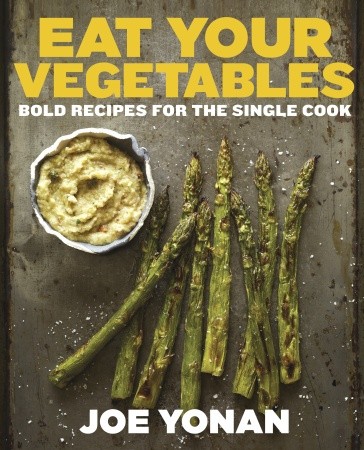





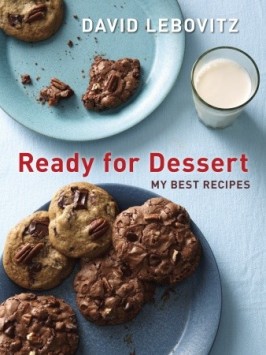
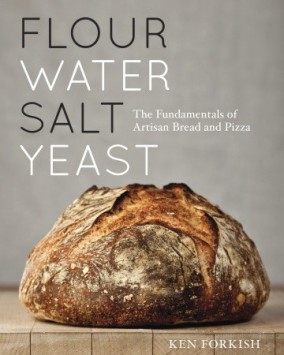
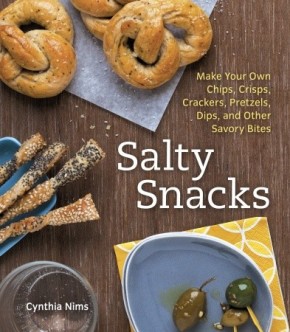
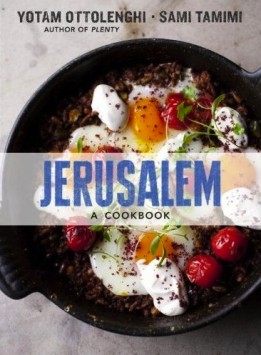
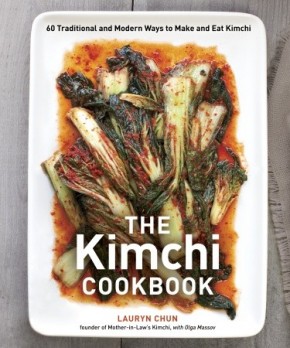

Leave a Reply